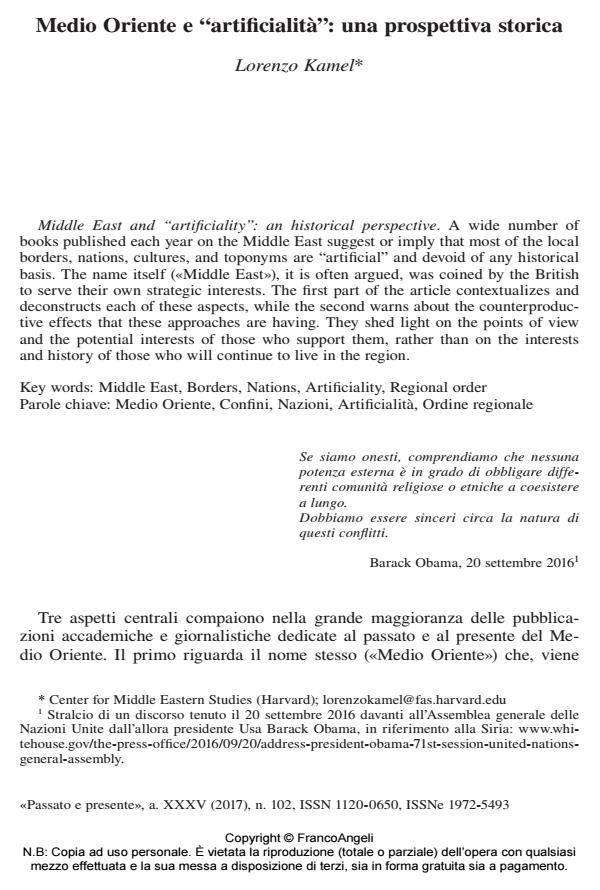Middle East and "artificiality": an historical perspective.
Journal title PASSATO E PRESENTE
Author/s Lorenzo Kamel
Publishing Year 2017 Issue 2017/102
Language Italian Pages 15 P. 109-123 File size 163 KB
DOI 10.3280/PASS2017-102006
DOI is like a bar code for intellectual property: to have more infomation
click here
Below, you can see the article first page
If you want to buy this article in PDF format, you can do it, following the instructions to buy download credits

FrancoAngeli is member of Publishers International Linking Association, Inc (PILA), a not-for-profit association which run the CrossRef service enabling links to and from online scholarly content.
A wide number of books published each year on the Middle East suggest or imply that most of the local borders, nations, cultures, and toponyms are "artificial" and devoid of any historical basis. The name itself («Middle East»), it is often argued, was coined by the British to serve their own strategic interests. The first part of the article contextualizes and deconstructs each of these aspects, while the second warns about the counterproductive effects that these approaches are having. They shed light on the points of view and the potential interests of those who support them, rather than on the interests and history of those who will continue to live in the region.
Keywords: Middle East, Borders, Nations, Artificiality, Regional order
Lorenzo Kamel, Medio Oriente e "artificialità": una prospettiva storica in "PASSATO E PRESENTE" 102/2017, pp 109-123, DOI: 10.3280/PASS2017-102006